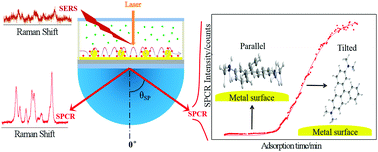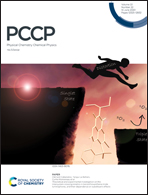In situ and sensitive monitoring of configuration-switching involved dynamic adsorption by surface plasmon-coupled directional enhanced Raman scattering†
Abstract
Surface adsorption studies play a crucial role in numerous fields from surface catalysis to molecular separation. However, investigation on adsorption mechanisms has been restricted to limited analytes and approaches, which calls for an in situ and sensitive surface analysis technique capable of revealing the mechanisms as well as discriminating different adsorbates and their geometry at different adsorption stages. In this study, we employed surface plasmon-coupled directional enhanced Raman scattering (SPCR), a novel technique developed by coupling surface plasmon-coupled emission with SERS, to study conformation-switching involved dynamic adsorption with background suppression and improved sensitivity (nearly 30-fold). We obtained the isotherms for a conformation-changing Raman model analyte, malachite green. An S-type Langmuir model was fitted from the time-resolved SPCR signals sensitively and without any interference from the bulk solution. The reorientation of the analyte from a predominantly parallel configuration to a perpendicular one was captured by the dramatic increase in the intensity ratios of the adsorption-related peaks to the adsorption-unrelated peak. We believe that this new sensitive and selective SPCR technique will be a promising tool for surface adsorption kinetics analysis.



 Please wait while we load your content...
Please wait while we load your content...